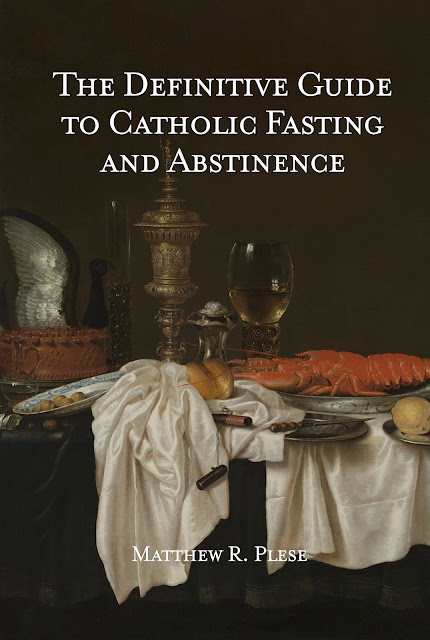Through the boldness and generosity of St. Joseph of Arimathea and St. Nicodemus, who sought the Body of Our Lord from Pilate (cf. John 19:38) despite the consequences they would suffer from the Jewish leaders, Our Lord’s Body was given a proper burial as the Scriptures affirm: “And Joseph taking the body, wrapped it up in a clean linen cloth. And laid it in his own new monument, which he had hewed out in a rock. And he rolled a great stone to the door of the monument and went his way” (Matt. 27:59-60). In imitation of the humility of the Lord, Who was buried in a simple linen cloth, the altar at Mass is likewise clothed in a simple linen cloth, as St. Bede the Venerable relates: “The Church's custom has prevailed for the sacrifice of the altar to be offered not upon silk, nor upon dyed cloth, but on linen of the earth; as the Lord's Body was buried in a clean winding-sheet.”
Yet more than merely having a reference to it in the altar cloth, we are privileged to still have on this earth the actual burial cloth of Our Lord, which is known as the Shroud of Turin, since the holy relic has remained in the city of Turin, Italy for centuries. The Shroud of Turin has been subjected to a variety of rigorous examinations to confirm its authenticity using scientific methods, despite the rather obvious conclusion that the intricacy and detail on the Shroud could not have been created by Medieval or even modern technology. In fact, the Turin Shroud Center of Colorado has demonstrated that the fold marks found on the Shroud indicate it once resided in Constantinople in the 10th-11th centuries, in contrast to those who claim that the shroud was a 14th century forgery. This corroborates the claim of historians who maintain that the Lord's burial cloth was in the possession of Byzantine emperors before the Sack of Constantinople in A.D. 1204.
The Holy See remained silent on the Shroud until the middle of the 20th century when, in 1940, Sister Maria Pierina De Micheli obtained authorization from the Archdiocese of Milan to produce the Holy Face Medal with the image of the Holy Shroud. Pope Pius XII subsequently approved the image in 1958 in connection with devotion to the Holy Face and the Feast of the Holy Face, which he instituted to be said on Shrove Tuesday of each year in reparation for the offenses of Mardi Gras. Further corroborating the approval of devotion to the Shroud is the celebration of the special feast in honor of the Most Holy Shroud of Our Lord Jesus Christ in Turin, which was observed on the Friday after the Second Sunday of Lent in Turin in the pre-1955 Roman Missal.
Closer to our times, Pope Benedict XVI further expressed his own belief in the authenticity of the Shroud of Turin as the Lord’s own burial cloth by calling it “a truly mysterious image, which no human artistry was capable of producing. In some inexplicable way, it appeared imprinted upon cloth and claimed to show the true face of Christ, the crucified and risen Lord.” Yet while the Church has officially not decreed that the Shroud of Turin is the actual burial cloth of the Lord, the scientific evidence of the Turin Center of Colorado points to this reality. As Holy Mother Church affirms in her actions, whether or not the cloth is authentic has no bearing on the validity of what Our Lord taught or on the saving power of His death and Resurrection.








0 comment(s):
Post a Comment